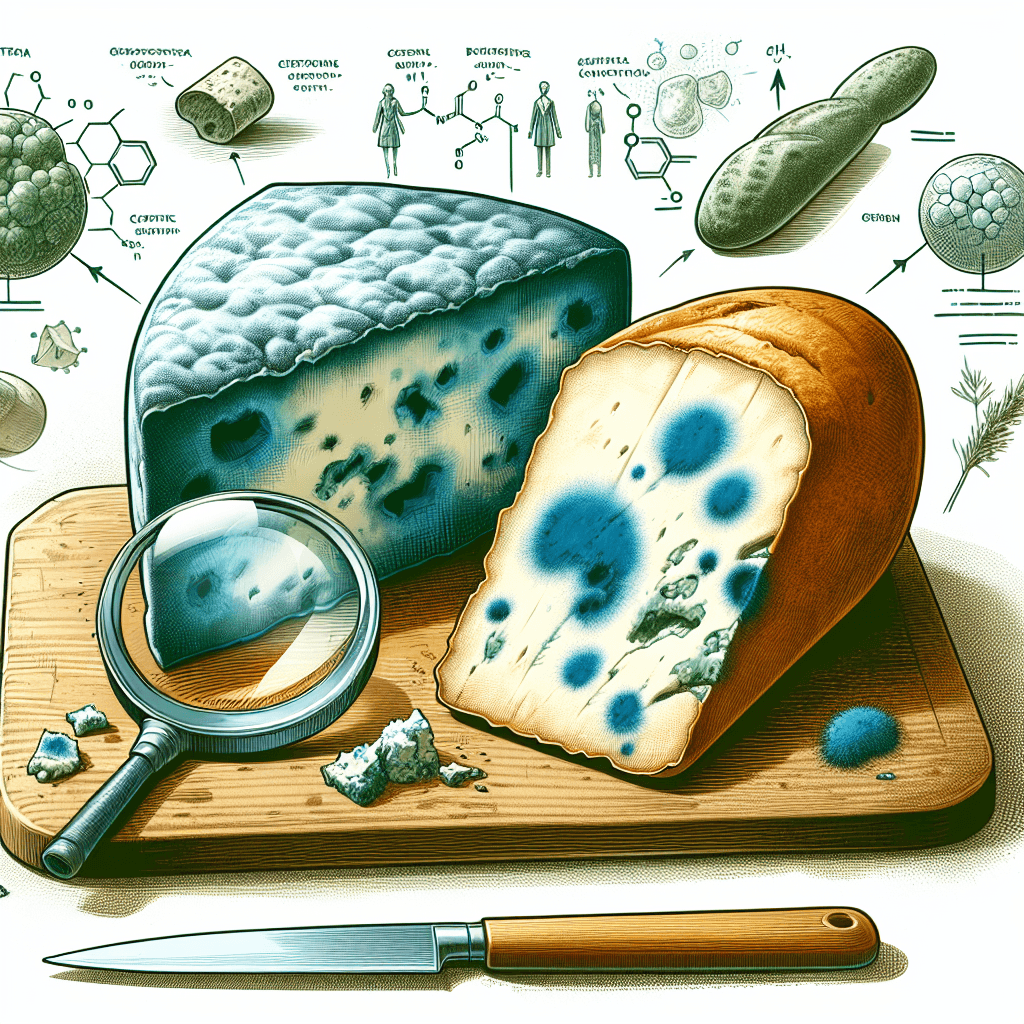Why is it safe to eat the mold in blue cheese but not on bread
One mold is a carefully cultivated delicacy, while its cousin on your bread is growing dangerous, invisible toxins—we'll break down the crucial difference.


Too Long; Didn't Read
TLDR: The mold in blue cheese is a specific, safe strain grown in a controlled environment where harmful molds cannot survive. Bread mold is a random, unknown fungus that can produce dangerous toxins, and its invisible roots contaminate the entire loaf.
A Tale of Two Molds: Why Is It Safe to Eat the Mold in Blue Cheese But Not on Bread?
Picture this: you reach for a slice of bread to make a sandwich and spot a fuzzy, green-black patch on the crust. Your immediate reaction is likely one of disgust, and you toss the entire loaf in the bin. Later that day, you might enjoy a salad topped with crumbles of Roquefort or Stilton cheese, savoring the pungent, veiny blue-green mold without a second thought. This common kitchen contradiction raises a fascinating question: why is one type of mold a dangerous contaminant while the other is a celebrated delicacy?
The answer lies not in the mold itself, but in the specific type of mold and the environment in which it grows. This post will unravel the microbiological mystery, explaining the crucial differences between the cultivated fungi in your cheese and the wild invaders on your bread, ensuring you know exactly what’s safe to eat and what belongs in the compost.
Not All Molds Are Created Equal
The first and most important thing to understand is that the word "mold" is a broad term for a vast group of fungi, encompassing thousands of different species. Thinking all molds are the same is like thinking all plants are the same; you can eat spinach, but you wouldn’t eat poison ivy. The molds used in cheesemaking are fundamentally different from the ones that colonize your bread.
The Cultivated Case of Blue Cheese
The signature blue or green veins in cheeses like Gorgonzola, Roquefort, and Stilton are the result of specific, carefully selected strains of mold, most commonly from the Penicillium genus, such as Penicillium roqueforti or Penicillium glaucum.
These are the key factors that make this mold safe:
- Intentional Introduction: Cheesemakers intentionally introduce these specific mold cultures to the milk or curds during the production process. They are a cultivated ingredient, not an accident.
- Safe Strains: These particular strains of Penicillium have been used for centuries and are known not to produce mycotoxins—toxic chemical substances that can be produced by some molds.
- Controlled Environment: The cheese itself provides a unique environment. Its high salt content, specific acidity (pH), and low temperature create conditions where the desired Penicillium can thrive, but harmful bacteria and other dangerous molds cannot. This controlled environment ensures that only the "good" mold grows.
Essentially, the mold in blue cheese is a domesticated fungus, perfectly adapted to its cheesy home and confirmed to be safe for human consumption.
The Wild World of Bread Mold
The mold that appears on your bread is a completely different story. It's an uninvited guest from the environment. Spores are everywhere—in the air, on surfaces—just waiting for a welcoming place to land. Bread, with its moist and porous structure, is a perfect breeding ground.
The mold on your bread is an unknown variable, and that’s where the danger lies. It could be one of several common types, such as Rhizopus, Aspergillus, or even other wild strains of Penicillium. Some of these molds are harmless, but others can be dangerous because they are capable of producing mycotoxins. These toxins can cause everything from allergic reactions and respiratory problems to, in cases of long-term exposure, more severe health issues.
The "Tip of the Iceberg" Problem
You might be tempted to just cut off the moldy spot on a slice of bread, but this is a critical mistake. Bread is a soft, porous food. By the time you see the fuzzy growth on the surface, the mold has already sent a network of deep, invisible roots, called hyphae, throughout the rest of the slice and potentially the entire loaf.
These invasive roots are where mycotoxins are often concentrated. So even if you remove the visible part, you are likely still consuming the hidden, potentially toxic network within. This is why food safety experts, including the USDA, advise discarding the entire loaf of moldy bread. This rule applies to other soft foods as well, like jams, soft fruits, and lunch meats. On hard foods like hard cheese or firm salami, mold can't penetrate as deeply, and it is sometimes safe to cut off the moldy part with a generous margin.
Conclusion: Control vs. Contamination
The difference between the mold in blue cheese and the mold on bread boils down to control versus contamination. The mold in blue cheese is a specific, known, and safe ingredient that is intentionally cultivated in an environment that prevents harmful microbes from growing. In contrast, the mold on your bread is an unknown, wild contaminant that has grown in an uncontrolled environment and may have produced dangerous mycotoxins that have spread invisibly throughout the loaf.
So, the next time you're faced with a moldy food item, remember this fundamental difference. Embrace the delicious, tangy bite of a good blue cheese, but when it comes to that fuzzy spot on your bread, always follow the simple but crucial food safety mantra: when in doubt, throw it out.


